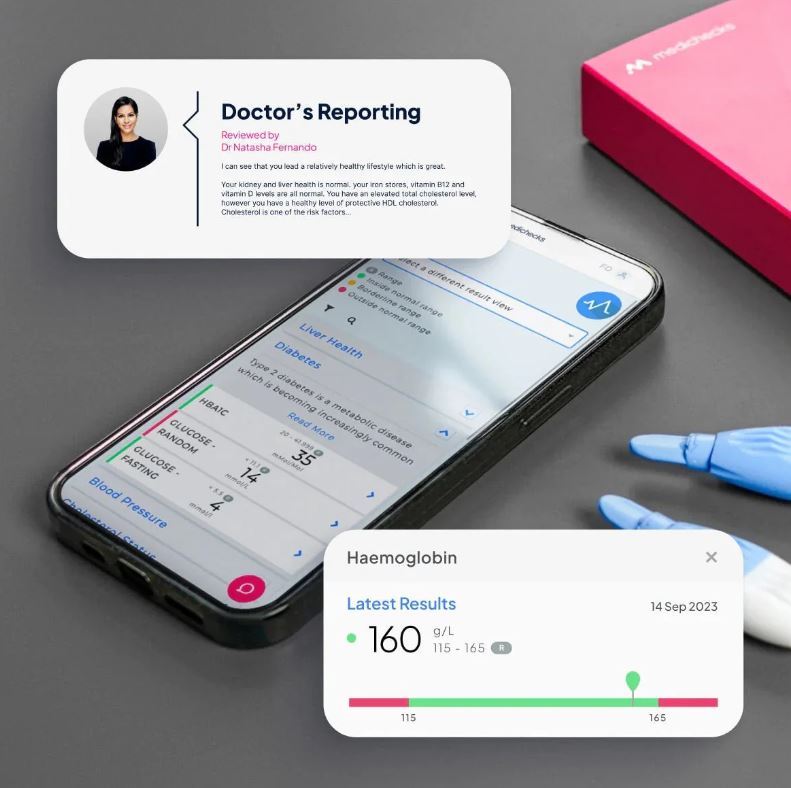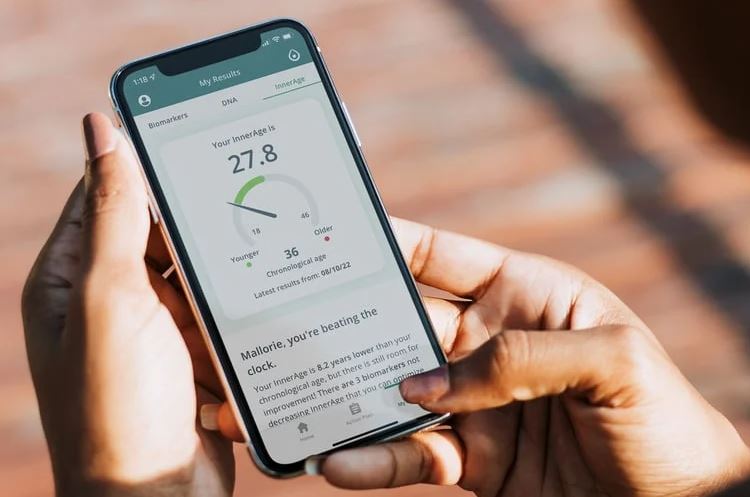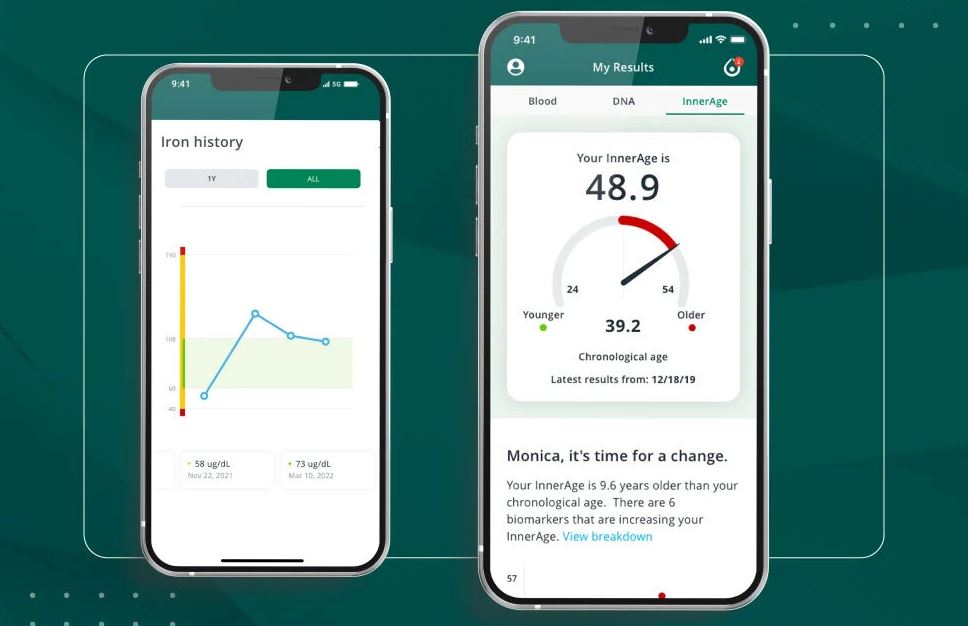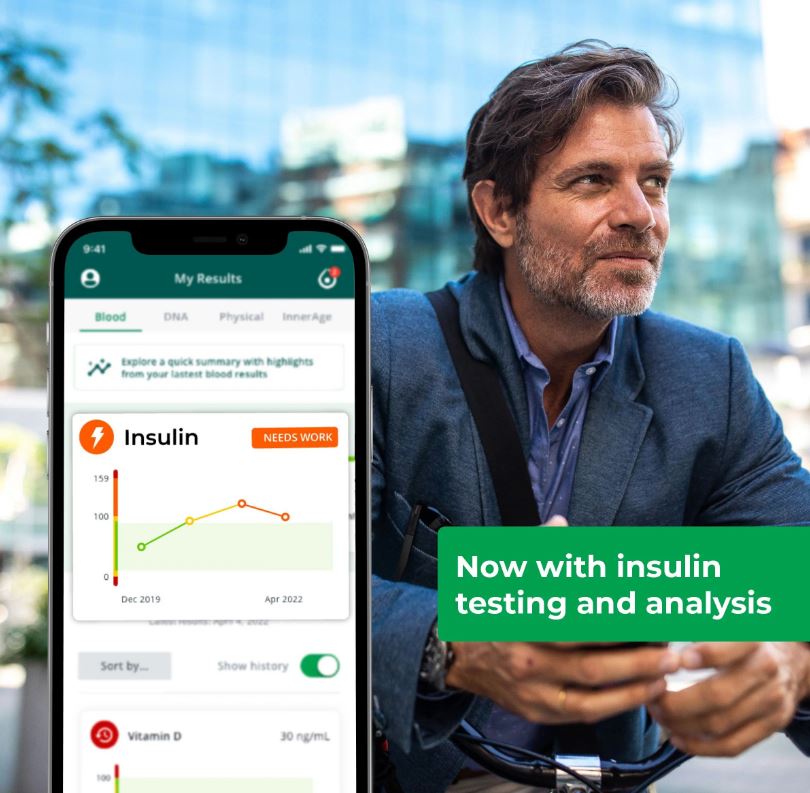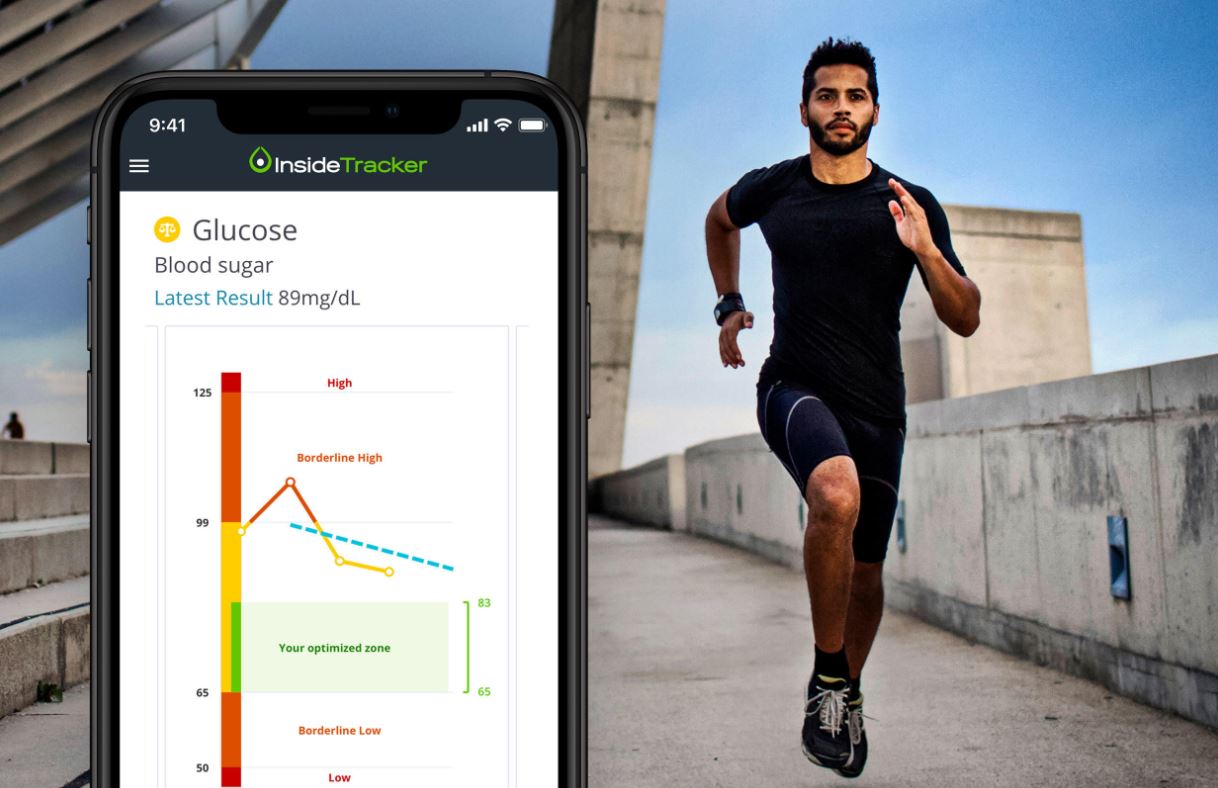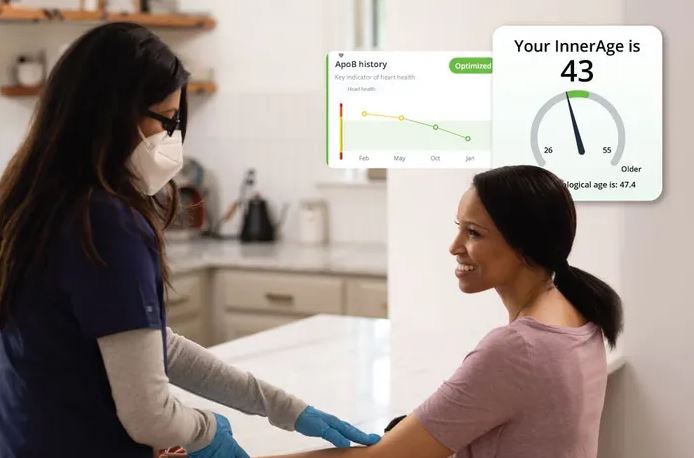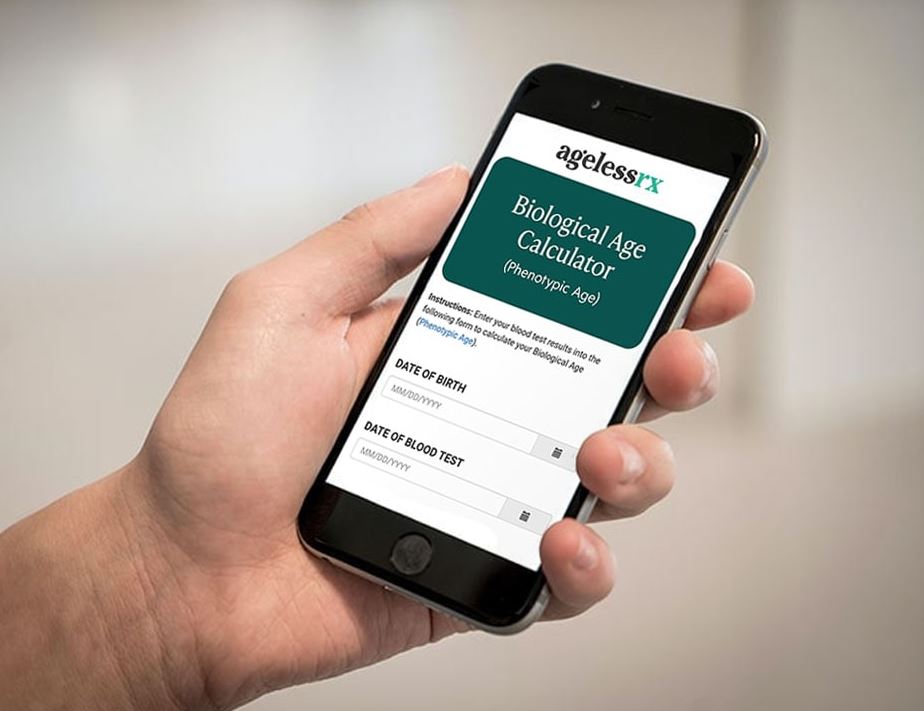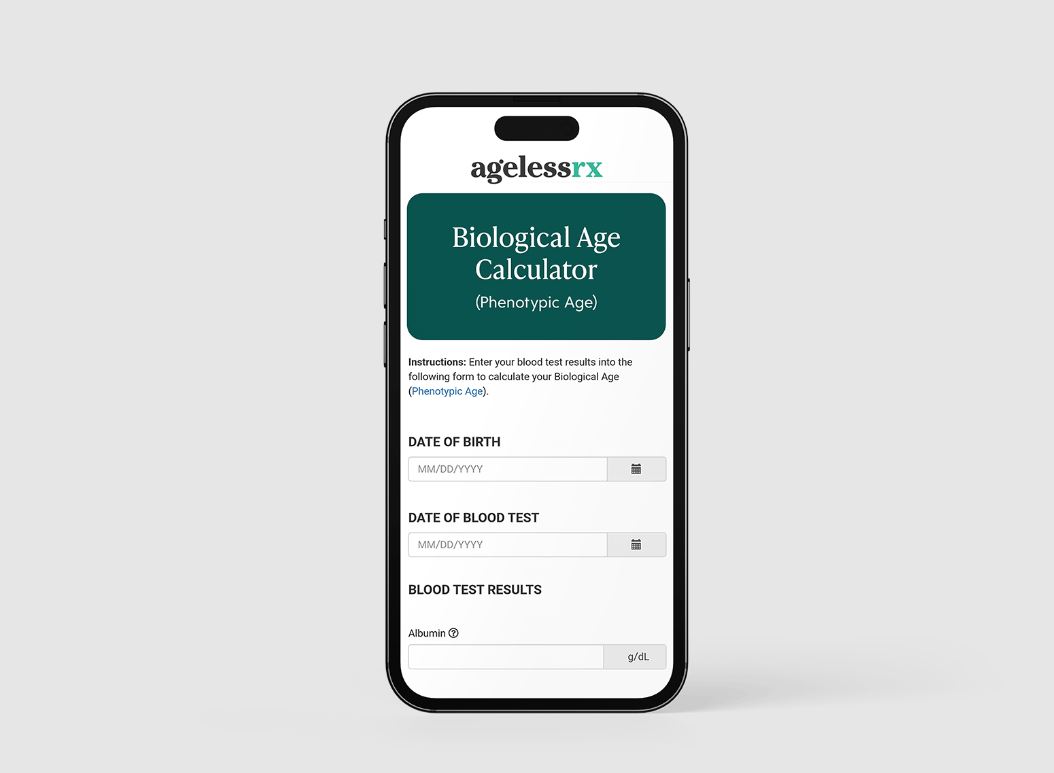How a Phenotypic Age Calculator Can Help Measure Biological Age
In the realm of health and aging, the concept of phenotypic age calculator has emerged as a revolutionary marker, shifting our understanding of the aging process. Biological age refers to the condition of our bodies at the cellular level, providing a more accurate representation of our health status compared to chronological age, which is simply the number of years we have lived. While chronological age progresses uniformly for everyone, biological age varies significantly from person to person, influenced by genetics, lifestyle choices, and environmental factors.
The distinction between chronological and biological age is crucial. Chronological age is a straightforward measure of the passage of time from birth, but it does not account for the unique ways individuals experience aging. Biological age, on the other hand, reflects the cumulative effect of various physiological changes and the wear and tear on our cells and tissues. This difference explains why some people appear younger or older than their chronological peers. For instance, two individuals may be 50 years old chronologically, but one might have a biological age of 40 while the other has a biological age of 60, depending on their health and lifestyle.
Understanding biological age is essential for several reasons. First, it provides a more nuanced insight into our overall health and potential lifespan, enabling more personalized and effective healthcare interventions. By assessing biological age, healthcare providers can identify early signs of aging-related diseases and implement preventative measures tailored to an individual’s specific needs. Additionally, understanding biological age can motivate individuals to adopt healthier lifestyles, as it offers tangible evidence of the benefits of positive behaviors like regular exercise, a balanced diet, and stress management.
In summary, the concept of biological age offers a deeper and more personalized understanding of aging, highlighting the importance of genetics, lifestyle, and environment in shaping our health. By focusing on biological age, we can better manage our health, potentially extending our lifespan and improving our quality of life.
Understanding Biological Age
Definition and Explanation of Biological Age
Biological age is a measure of how well or poorly your body is functioning relative to your actual calendar age. Unlike chronological age, which simply counts the number of years since your birth, biological age assesses the physiological and functional status of your cells and organs. It is determined by examining various biomarkers that reflect the cumulative effects of genetics, lifestyle, and environmental factors on the body’s biological systems. These biomarkers include DNA methylation patterns, telomere length, gene expression profiles, and the presence of specific proteins in the blood, among others. By analyzing these indicators, scientists and healthcare providers can estimate the biological age of an individual, offering insights into their overall health and potential longevity.
How Biological Age Differs from Chronological Age
The primary difference between biological age and chronological age lies in what each measures. Chronological age is a straightforward count of the years you have lived. It is a constant figure that progresses uniformly for everyone. Biological age, however, is a more dynamic measure, reflecting the state of your body’s internal systems. It can be influenced by a variety of factors, such as lifestyle choices (diet, exercise, smoking, alcohol consumption), environmental exposures (pollution, toxins), and genetic predispositions.
For example, two individuals both 50 years old chronologically might have significantly different biological ages. One might have a biological age of 45 due to a healthy lifestyle and good genetic makeup, while the other might have a biological age of 60, perhaps because of chronic stress, poor diet, and lack of exercise. This discrepancy highlights the limitations of using chronological age alone to assess health and aging. Biological age provides a more accurate and individualized snapshot of how well a person is aging internally.
The Significance of Biological Age in Medical and Health Sciences
Understanding biological age has profound implications for medical and health sciences. It allows for a more precise evaluation of an individual’s health status and aging process. By focusing on biological age, healthcare providers can identify the early onset of age-related diseases and conditions, often before they become clinically apparent. This early detection is crucial for implementing preventive measures and treatments that can mitigate the progression of diseases such as cardiovascular disease, diabetes, Alzheimer’s, and certain cancers.
Moreover, biological age can serve as a powerful motivational tool for individuals. Seeing a tangible measure of their internal health can encourage people to adopt healthier behaviors. For instance, someone with a biological age significantly higher than their chronological age might be more motivated to change their lifestyle to improve their health markers. Conversely, a lower biological age can validate and reinforce healthy habits.
In research, biological age provides a valuable metric for studying the effects of various interventions aimed at slowing or reversing aging. Scientists can use biological age to gauge the effectiveness of new drugs, dietary regimens, exercise programs, and other lifestyle modifications. This can lead to more personalized and effective approaches to healthcare, as treatments can be tailored to the specific needs and conditions of individuals based on their biological age.
In summary, biological age is a crucial concept that offers a deeper understanding of the aging process. It goes beyond the limitations of chronological age, providing a more accurate and individualized measure of health. By integrating biological age into medical practice and research, we can enhance the prevention, detection, and treatment of age-related diseases, ultimately improving the quality of life and longevity for individuals.
The Science Behind Biological Age Calculation
Overview of the Biological Markers Used to Calculate Biological Age
Biological age calculation relies on a variety of biomarkers that reflect the physiological state and functional capacity of an individual’s cells and tissues. These markers provide insight into the biological processes that contribute to aging and are often more indicative of an individual’s health status than chronological age. Key biological markers include:
- DNA Methylation Patterns: Changes in the methylation of DNA over time are a significant marker of biological aging. DNA methylation involves the addition of a methyl group to DNA, affecting gene expression without altering the underlying genetic code.
- Telomere Length: Telomeres are protective caps at the ends of chromosomes that shorten with each cell division. Shorter telomeres are associated with aging and a higher risk of age-related diseases.
- Gene Expression Profiles: The patterns of genes being turned on or off can indicate how cells respond to various stresses and changes associated with aging.
- Protein Biomarkers: Levels of specific proteins in the blood, such as inflammatory markers and growth factors, provide information on the aging process and the overall health of an individual.
- Metabolomic Profiles: Metabolites in the blood can reflect the biochemical activity within the body and are indicative of metabolic health and aging.
Explanation of Epigenetics and Its Role in Aging
Epigenetics is the study of changes in gene expression that do not involve alterations to the underlying DNA sequence. These changes can be influenced by a variety of factors, including environmental exposures, lifestyle choices, and physiological stressors. Epigenetic modifications, such as DNA methylation, histone modification, and non-coding RNA molecules, play a crucial role in regulating gene activity and ensuring proper cellular function.
As we age, the epigenetic landscape of our cells changes, leading to alterations in gene expression that can contribute to the aging process. For example, increased DNA methylation in certain regions of the genome can silence genes that are important for cell repair and maintenance, while decreased methylation in other regions can activate genes that promote inflammation and cellular senescence. These epigenetic changes accumulate over time and can drive the aging process at the cellular level, ultimately affecting the function and health of tissues and organs.
Detailed Discussion on Epigenetic Biomarkers
Epigenetic biomarkers are specific changes in the epigenome that can be measured to estimate biological age and assess the impact of aging on an individual’s health. Key epigenetic biomarkers include:
- DNA Methylation Clocks: The most well-known epigenetic biomarkers for biological age are DNA methylation clocks, such as the Horvath Clock and the Levine PhenoAge Clock. These clocks use specific patterns of DNA methylation at various sites across the genome to estimate an individual’s biological age. The accuracy of these clocks has been validated in numerous studies, making them reliable tools for assessing biological aging.
- Histone Modifications: Histones are proteins around which DNA is wrapped, and their modification can influence gene expression. Changes in histone acetylation and methylation are associated with aging and can serve as biomarkers for biological age. For example, decreased acetylation of histone H4 is linked to aging and age-related diseases.
- Non-coding RNAs: These RNA molecules do not code for proteins but play a regulatory role in gene expression. Specific non-coding RNAs, such as microRNAs (miRNAs) and long non-coding RNAs (lncRNAs), have been found to change with age and can serve as biomarkers for biological aging.
- Transcriptomic Profiles: The overall patterns of gene expression, or transcriptomic profiles, can also serve as epigenetic biomarkers. Age-related changes in the expression of genes involved in inflammation, DNA repair, and metabolism can provide insights into the biological aging process.
In summary, the calculation of biological age relies on a comprehensive understanding of various biological markers and the role of epigenetics in aging. By analyzing these markers, scientists can gain valuable insights into the aging process and develop personalized strategies for promoting health and longevity.
The Role of DNA Methylation in Biological Age
Introduction to DNA Methylation and Its Biological Significance
DNA methylation is an epigenetic mechanism that involves the addition of a methyl group to the cytosine base of DNA, typically at CpG sites (cytosine-phosphate-guanine sites). This modification can regulate gene expression without altering the underlying DNA sequence. DNA methylation plays a crucial role in various biological processes, including embryonic development, X-chromosome inactivation, genomic imprinting, and the suppression of transposable elements. It is essential for maintaining cellular identity and function, as well as for controlling the timing and level of gene activity in response to internal and external cues.
How DNA Methylation Patterns Change with Age
As individuals age, the patterns of DNA methylation in their cells undergo significant changes. These age-related alterations in DNA methylation can be categorized into two main types: global hypomethylation and site-specific hypermethylation.
- Global Hypomethylation: With aging, there is a general decrease in DNA methylation levels across the genome. This global hypomethylation can lead to genomic instability, as it may activate transposable elements and cause aberrant gene expression. Hypomethylation is often observed in repetitive sequences and regions of the genome that are typically methylated to maintain genomic integrity.
- Site-specific Hypermethylation: Concurrently, specific regions of the genome, particularly promoter regions of certain genes, may become hypermethylated with age. This hypermethylation can lead to the silencing of genes involved in critical cellular processes such as DNA repair, cell cycle regulation, and apoptosis. The silencing of these genes can contribute to the decline in cellular function and the onset of age-related diseases.
The dynamic changes in DNA methylation patterns with age reflect the complex interplay between genetic, environmental, and lifestyle factors that influence the aging process. These alterations can disrupt normal cellular functions, leading to the accumulation of cellular damage and the eventual decline in tissue and organ function.
The Correlation Between DNA Methylation and Biological Age
Research has shown a strong correlation between DNA methylation patterns and biological age, leading to the development of DNA methylation-based biomarkers, commonly referred to as “epigenetic clocks.” These clocks use specific DNA methylation sites to estimate an individual’s biological age with remarkable accuracy.
- Horvath Clock: One of the most widely used epigenetic clocks, developed by Dr. Steve Horvath, analyzes DNA methylation levels at 353 specific CpG sites across the genome. The Horvath Clock has been validated across various tissues and cell types, making it a robust tool for estimating biological age.
- Levine PhenoAge Clock: Another prominent epigenetic clock, developed by Dr. Morgan Levine, incorporates both DNA methylation data and clinical biomarkers to provide a comprehensive estimate of biological age. The PhenoAge Clock is designed to capture the physiological and functional aspects of aging, offering insights into an individual’s healthspan and disease risk.
These epigenetic clocks have revealed that individuals with higher biological ages relative to their chronological ages are at increased risk for age-related diseases, mortality, and functional decline. Conversely, those with lower biological ages tend to have better health outcomes and longer lifespans.
The correlation between DNA methylation and biological age underscores the potential of using DNA methylation as a biomarker for aging and age-related diseases. By monitoring changes in DNA methylation patterns, researchers and healthcare providers can gain valuable insights into an individual’s aging trajectory and implement personalized interventions to promote healthy aging and longevity.
In summary, DNA methylation plays a pivotal role in regulating gene expression and maintaining genomic stability. The age-related changes in DNA methylation patterns serve as critical indicators of biological age, providing a valuable tool for assessing health and predicting age-related outcomes. Understanding these patterns can help in developing strategies to mitigate the effects of aging and enhance overall well-being.
Key Researchers and Their Contributions
Introduction to Prominent Researchers in the Field
The field of biological age research has been significantly advanced by the contributions of several key researchers, most notably Dr. Steve Horvath and Dr. Morgan Levine. Their pioneering work on epigenetic clocks and the molecular mechanisms of aging has provided crucial insights into how biological age can be measured and understood. These researchers have developed tools and frameworks that have become fundamental to the study of aging and age-related diseases.
Overview of Their Significant Contributions to Understanding Biological Age
Dr. Steve Horvath
Dr. Steve Horvath, a professor at the University of California, Los Angeles (UCLA), is best known for developing the Horvath Clock, one of the first and most widely used DNA methylation-based biological age estimators. His work has established a strong correlation between DNA methylation patterns and chronological age, demonstrating that these patterns can predict biological age with remarkable accuracy across various tissues and cell types.
The Horvath Clock has been instrumental in aging research, providing a reliable biomarker for biological age that can be used to study the effects of genetics, lifestyle, and environmental factors on aging. Dr. Horvath’s contributions have paved the way for numerous studies investigating the epigenetic mechanisms underlying aging and age-related diseases.
Dr. Morgan Levine
Dr. Morgan Levine, an assistant professor at Yale University, has also made significant contributions to the field of biological age research. She developed the PhenoAge Clock, an advanced epigenetic clock that incorporates both DNA methylation data and clinical biomarkers to provide a more comprehensive estimate of biological age. This clock is designed to capture not only the molecular aspects of aging but also the physiological and functional aspects, offering a deeper understanding of an individual’s healthspan and disease risk.
Dr. Levine’s work has highlighted the importance of integrating multiple data sources to improve the accuracy and predictive power of biological age estimations. Her research has emphasized the role of biological age in predicting mortality and age-related diseases, underscoring the potential of these measures in personalized medicine and public health.
Notable Studies and Findings by These Researchers
Steve Horvath’s Notable Studies
- Development of the Horvath Clock: In his landmark study published in 2013, Dr. Horvath introduced the Horvath Clock, demonstrating that DNA methylation levels at specific CpG sites can accurately predict chronological age. This study validated the use of epigenetic clocks in various tissues and highlighted their potential in aging research.
- Epigenetic Age Acceleration: Dr. Horvath’s subsequent research has focused on the concept of epigenetic age acceleration, where individuals exhibit a biological age older than their chronological age. His studies have shown that epigenetic age acceleration is associated with increased risk of age-related diseases, cognitive decline, and mortality, providing a valuable tool for assessing health risks.
Morgan Levine’s Notable Studies
- PhenoAge Clock Development: Dr. Levine’s development of the PhenoAge Clock, published in 2018, represented a significant advancement in biological age estimation. By incorporating clinical biomarkers into the epigenetic clock, this tool offers a more holistic assessment of aging and health. Her work has demonstrated that the PhenoAge Clock can predict mortality and morbidity more accurately than chronological age.
- Biological Age and Healthspan: Dr. Levine’s research has explored the relationship between biological age and healthspan, showing that individuals with a lower biological age relative to their chronological age tend to have better health outcomes and longer life expectancy. Her studies have emphasized the potential of biological age as a target for interventions aimed at extending healthspan and preventing age-related diseases.
The contributions of Dr. Steve Horvath and Dr. Morgan Levine have been pivotal in advancing our understanding of biological age and its implications for health and aging. Their development of epigenetic clocks and exploration of the molecular mechanisms of aging have provided invaluable tools for researchers and healthcare providers. By measuring biological age, these tools offer insights into the aging process, enabling personalized interventions and promoting healthier, longer lives. The ongoing work of these researchers continues to shape the future of aging research and the development of strategies to combat age-related diseases.
Mechanisms of Aging
Explanation of the Biological and Cellular Mechanisms Involved in Aging
Aging is a complex, multifaceted process that occurs at the biological and cellular levels. Several interconnected mechanisms contribute to the aging process, each playing a role in the gradual decline of physiological function and the increased susceptibility to diseases. Key mechanisms include:
- Cellular Senescence: Cells can enter a state of permanent growth arrest known as senescence, where they no longer divide but remain metabolically active. Senescent cells accumulate with age and secrete pro-inflammatory cytokines, growth factors, and proteases, collectively referred to as the senescence-associated secretory phenotype (SASP). This contributes to tissue dysfunction and the aging phenotype.
- Telomere Shortening: Telomeres are protective caps at the ends of chromosomes that shorten with each cell division. As telomeres become critically short, cells enter senescence or undergo apoptosis. Telomere shortening is a hallmark of cellular aging and is associated with age-related diseases and reduced regenerative capacity.
- DNA Damage and Repair: Accumulation of DNA damage over time, due to environmental factors and normal metabolic processes, leads to genomic instability. The efficiency of DNA repair mechanisms declines with age, resulting in mutations and cellular dysfunction.
- Mitochondrial Dysfunction: Mitochondria are the powerhouses of the cell, producing energy in the form of ATP. With aging, mitochondrial function deteriorates, leading to reduced energy production, increased production of reactive oxygen species (ROS), and cellular damage.
- Epigenetic Changes: Epigenetic modifications, such as DNA methylation, histone modification, and non-coding RNA expression, regulate gene expression without altering the DNA sequence. Age-related changes in the epigenome can disrupt gene regulation, contributing to aging and age-related diseases.
- Loss of Proteostasis: Proteostasis involves the maintenance of cellular protein balance through the synthesis, folding, and degradation of proteins. Aging impairs proteostasis, leading to the accumulation of misfolded and damaged proteins, which can form aggregates and disrupt cellular function.
The Role of Genetics in Aging Processes
Genetics plays a significant role in determining the rate of aging and longevity. Several genetic factors influence aging processes:
- Longevity Genes: Certain genes are associated with increased lifespan and resistance to age-related diseases. For example, the FOXO3 gene is linked to longevity in various populations. Variations in these genes can impact cellular stress responses, metabolism, and maintenance of genomic integrity.
- Genetic Disorders: Some genetic mutations can accelerate aging, as seen in progeroid syndromes like Hutchinson-Gilford Progeria Syndrome (HGPS) and Werner Syndrome. These conditions provide insights into the molecular mechanisms of aging and the importance of genetic stability.
- Heritability of Lifespan: Studies on twins and families suggest that genetic factors account for 20-30% of the variation in human lifespan. This indicates that while genetics plays a role, environmental and lifestyle factors also significantly influence aging.
Discussion on Cellular Dysfunction and Its Impact on Aging
Cellular dysfunction is a central feature of aging, driven by the accumulation of damage and the decline in cellular maintenance mechanisms. This dysfunction impacts aging in several ways:
- Tissue and Organ Decline: As cells lose their ability to function optimally, tissues and organs begin to deteriorate. This manifests as a decline in physiological functions, such as reduced muscle strength, impaired cognitive abilities, and diminished immune responses.
- Increased Disease Susceptibility: Cellular dysfunction contributes to the development of age-related diseases, including cardiovascular disease, diabetes, neurodegenerative disorders, and cancer. For instance, DNA damage and genomic instability are key factors in cancer development, while mitochondrial dysfunction and oxidative stress are implicated in neurodegenerative diseases.
- Systemic Inflammation: The accumulation of senescent cells and the associated SASP promote chronic, low-grade inflammation, known as “inflammaging.” This systemic inflammation exacerbates tissue damage and accelerates the aging process, creating a vicious cycle of cellular dysfunction and inflammation.
In summary, the mechanisms of aging involve a complex interplay of cellular and molecular processes that lead to functional decline and increased vulnerability to diseases. Genetics influences these processes, while cellular dysfunction plays a critical role in the manifestation of aging and age-related conditions. Understanding these mechanisms is crucial for developing interventions to promote healthy aging and extend lifespan.
Factors Influencing Biological Age
Lifestyle Factors That Affect Biological Age
Several lifestyle factors significantly influence biological age, often determining the difference between an individual’s biological and chronological age. Key lifestyle factors include:
- Diet: A balanced diet rich in fruits, vegetables, whole grains, lean proteins, and healthy fats is crucial for maintaining a youthful biological age. Diets high in processed foods, sugars, and unhealthy fats can accelerate aging by promoting inflammation, oxidative stress, and metabolic dysfunction. Nutrient-dense foods provide essential vitamins, minerals, and antioxidants that protect against cellular damage and support overall health.
- Exercise: Regular physical activity is one of the most effective ways to slow down biological aging. Exercise enhances cardiovascular health, boosts immune function, maintains muscle mass, and improves metabolic health. It also helps reduce inflammation and oxidative stress, which are key drivers of aging. Both aerobic exercises (e.g., running, cycling) and strength training (e.g., weightlifting) are beneficial.
- Stress Management: Chronic stress accelerates aging by triggering the release of stress hormones like cortisol, which can damage cells and tissues over time. Effective stress management techniques, such as mindfulness meditation, yoga, deep breathing exercises, and adequate sleep, can mitigate these effects. Reducing stress helps maintain hormonal balance and supports overall cellular health.
- Sleep: Quality sleep is essential for cellular repair and regeneration. Poor sleep patterns are linked to increased oxidative stress, inflammation, and impaired immune function, all of which contribute to accelerated aging. Ensuring 7-9 hours of restorative sleep per night can help maintain a youthful biological age.
The Impact of Environmental Factors on Biological Age
Environmental factors also play a significant role in influencing biological age. These factors include:
- Pollution: Exposure to environmental pollutants, such as air pollution, heavy metals, and chemicals, can accelerate biological aging. These pollutants generate free radicals and oxidative stress, leading to cellular damage and inflammation. Minimizing exposure to pollutants and using air purifiers can help reduce these effects.
- Toxins: Toxins from tobacco smoke, alcohol, and certain chemicals in food and personal care products can accelerate aging. These toxins promote inflammation, damage DNA, and impair cellular function. Reducing exposure to toxins through healthy lifestyle choices and using non-toxic products can mitigate their impact on biological age.
- Sun Exposure: Prolonged and unprotected exposure to ultraviolet (UV) radiation from the sun can cause skin damage, accelerate skin aging, and increase the risk of skin cancer. Using sunscreen, wearing protective clothing, and avoiding excessive sun exposure can help protect the skin and reduce biological aging.
The Influence of Genetics and Epigenetics on the Aging Process
Genetics and epigenetics are fundamental factors that influence the aging process. While genetics provides the blueprint for biological functions, epigenetics involves modifications that regulate gene expression without altering the DNA sequence. Key points include:
- Genetic Predisposition: Genetic variations can influence an individual’s susceptibility to age-related diseases and their overall aging trajectory. Some people are genetically predisposed to longer lifespans and slower aging, while others may be more prone to rapid aging and related health issues.
- Epigenetic Modifications: Epigenetic changes, such as DNA methylation, histone modification, and non-coding RNA expression, regulate how genes are expressed. These modifications can be influenced by environmental factors, lifestyle choices, and experiences. Age-related epigenetic changes can alter gene expression, leading to cellular dysfunction and aging.
- Interplay Between Genetics and Lifestyle: While genetics sets the foundation, lifestyle and environmental factors can modulate genetic expression through epigenetic mechanisms. For example, a healthy lifestyle can positively influence epigenetic markers, potentially slowing down the aging process and reducing the risk of age-related diseases.
In summary, biological age is influenced by a complex interplay of lifestyle factors, environmental exposures, and genetic and epigenetic mechanisms. Understanding these factors allows individuals to make informed choices that can help maintain a youthful biological age, promote overall health, and extend lifespan. By adopting healthy habits, reducing exposure to harmful environmental factors, and considering genetic predispositions, individuals can positively impact their biological aging process.
Measuring Biological Age
Overview of Methods Used to Measure Biological Age
Measuring biological age involves a variety of methods that assess the physiological and molecular characteristics of an individual. These methods provide insights into how well a person’s body is aging compared to their chronological age. Common approaches include:
- Epigenetic Clocks: These use DNA methylation patterns to estimate biological age. They analyze specific CpG sites across the genome where methylation levels correlate with age. Prominent epigenetic clocks include the Horvath Clock and the PhenoAge Clock.
- Telomere Length: Telomeres, the protective caps on the ends of chromosomes, shorten with each cell division. Measuring telomere length can provide an indication of cellular aging, as shorter telomeres are associated with older biological age and higher disease risk.
- Biomarkers in Blood: Various biomarkers in the blood, such as levels of inflammatory markers, metabolic indicators, and protein expression profiles, can be used to assess biological age. These markers reflect the physiological state of different bodily systems.
- Physical and Functional Assessments: Tests that measure physical and cognitive functions, such as grip strength, walking speed, and cognitive performance, can provide indirect indicators of biological age. These assessments reflect the overall health and functional capacity of an individual.
Detailed Explanation of Blood Sample Tests and Lab Measurements
Blood sample tests are a common method for measuring biological age due to their accessibility and the wealth of information they provide about an individual’s health. Key lab measurements include:
- DNA Methylation Analysis: This test involves extracting DNA from a blood sample and analyzing methylation patterns at specific CpG sites. Techniques such as bisulfite sequencing or methylation-specific PCR are used to quantify methylation levels. The data is then compared to established epigenetic clocks to estimate biological age.
- Telomere Length Measurement: Telomere length can be measured using techniques such as quantitative PCR (qPCR), Southern blotting, or flow cytometry. Blood cells are isolated, and the length of telomeric DNA is quantified. Shorter telomeres indicate a higher biological age.
- Inflammatory Markers: Levels of pro-inflammatory cytokines (e.g., IL-6, TNF-alpha) and other markers of inflammation are measured using immunoassays like ELISA (enzyme-linked immunosorbent assay). Elevated levels of these markers are associated with accelerated aging.
- Metabolic Indicators: Blood tests measuring glucose, insulin, lipid profiles, and other metabolic markers provide information on metabolic health. Abnormal levels can indicate metabolic dysfunction and higher biological age.
- Proteomic and Transcriptomic Profiles: Advanced techniques such as mass spectrometry and RNA sequencing analyze the expression of proteins and genes in the blood. Changes in specific protein and gene expression patterns are linked to aging processes and can be used to estimate biological age.
How These Measurements Are Used to Estimate Biological Age
The collected data from blood sample tests and other lab measurements are analyzed using various computational models and algorithms to estimate biological age. The process typically involves:
- Data Collection: Blood samples are collected, and the relevant biomarkers are measured using the aforementioned techniques. This raw data includes DNA methylation levels, telomere length, inflammatory markers, metabolic indicators, and protein/gene expression profiles.
- Data Processing: The raw data is processed and normalized to account for any technical variations. This ensures that the measurements are accurate and comparable across different samples and individuals.
- Algorithm Application: The processed data is input into computational models or algorithms that have been trained on large datasets to predict biological age. For example, epigenetic clocks use machine learning algorithms to analyze DNA methylation patterns and estimate biological age based on established correlations with chronological age.
- Interpretation and Reporting: The output of these models provides an estimate of biological age, which is then interpreted in the context of the individual’s health. A biological age that is lower than chronological age suggests better health and slower aging, while a higher biological age indicates accelerated aging and potential health risks.
In summary, measuring biological age involves sophisticated techniques that analyze various biomarkers in blood samples. These measurements are processed through advanced computational models to provide an estimate of biological age, offering valuable insights into an individual’s health and aging process. This information can guide personalized healthcare strategies to promote healthy aging and improve overall well-being.
Implications of Biological Age Measurement
Health and Medical Implications of Knowing One’s Biological Age
Understanding one’s biological age offers profound insights into health and aging. Biological age, as opposed to chronological age, provides a more accurate reflection of an individual’s physiological condition and risk of age-related diseases. Knowledge of biological age can reveal underlying health issues that are not yet apparent through traditional diagnostic methods. For instance, an individual with a biological age significantly higher than their chronological age might be at increased risk for conditions such as cardiovascular diseases, diabetes, or neurodegenerative disorders. Conversely, a lower biological age suggests better health and a potentially longer, healthier lifespan.
How Biological Age Can Inform Personalized Healthcare and Prevention Strategies
Biological age measurement is a powerful tool for personalized healthcare, enabling tailored interventions based on an individual’s unique aging profile. Personalized healthcare can be significantly enhanced by the following approaches:
- Early Detection and Prevention: Knowing one’s biological age allows for the early detection of accelerated aging and the implementation of preventative measures. For example, if an individual’s biological age indicates early signs of cardiovascular disease, lifestyle modifications and medical interventions can be initiated to mitigate risks.
- Tailored Lifestyle Recommendations: Healthcare providers can offer personalized lifestyle recommendations based on biological age. This might include specific dietary changes, exercise regimens, and stress management techniques designed to target the factors contributing to accelerated aging.
- Targeted Therapies: Biological age can help identify individuals who might benefit from specific therapeutic interventions. For example, treatments aimed at reducing inflammation or enhancing mitochondrial function can be prioritized for those with biomarkers indicating these issues.
- Monitoring Treatment Efficacy: Biological age can be used to monitor the efficacy of medical treatments and lifestyle changes. Regular measurement of biological age can reveal whether interventions are successfully slowing down the aging process and improving overall health.
Potential Benefits of Using Biological Age as a Health Metric
Utilizing biological age as a health metric offers numerous benefits, both for individuals and the healthcare system:
- Enhanced Health Insights: Biological age provides a comprehensive view of an individual’s health that goes beyond traditional measures. It can uncover hidden health issues and provide a more accurate assessment of aging-related risks.
- Motivational Tool: Knowing one’s biological age can serve as a powerful motivational tool. Seeing a biological age higher than one’s chronological age can encourage individuals to adopt healthier habits. Conversely, improvements in biological age can reinforce positive behaviors.
- Resource Allocation: For healthcare providers and policymakers, biological age can help in the allocation of resources. Identifying individuals at higher risk for age-related diseases allows for targeted healthcare interventions and efficient use of medical resources.
- Public Health Impact: On a broader scale, integrating biological age measurement into public health strategies can help in the early identification of at-risk populations. This can lead to the development of programs aimed at reducing the prevalence of chronic diseases and improving population health.
- Research and Development: Biological age metrics can drive research and development in aging and longevity. Understanding the biological mechanisms of aging can lead to the discovery of new therapies and interventions to promote healthy aging.
- Insurance and Risk Assessment: Biological age can be utilized by insurance companies for more accurate risk assessments. It can help in designing policies that reflect an individual’s true health status, potentially leading to more equitable insurance premiums.
In summary, measuring biological age has significant implications for health and medical practices. It enables early detection and prevention of age-related diseases, informs personalized healthcare strategies, and provides a comprehensive metric for assessing health. The integration of biological age measurement into healthcare can lead to improved individual health outcomes, efficient resource allocation, and advancements in aging research. This approach represents a shift towards more precise, personalized, and proactive healthcare.
Reducing Biological Age
Strategies to Slow Down the Aging Process
Reducing biological age involves adopting a multifaceted approach that targets various mechanisms of aging. Several strategies have been identified to help slow down the aging process and maintain a youthful biological age:
- Balanced Nutrition: Consuming a diet rich in antioxidants, vitamins, and minerals can combat oxidative stress and support cellular health. Emphasizing whole foods such as fruits, vegetables, whole grains, lean proteins, and healthy fats can help maintain a balanced nutrient intake that supports longevity.
- Regular Exercise: Engaging in regular physical activity is crucial for reducing biological age. Both aerobic exercises (e.g., walking, running, swimming) and strength training (e.g., weightlifting, resistance exercises) improve cardiovascular health, maintain muscle mass, and enhance metabolic function.
- Stress Management: Chronic stress accelerates aging by increasing the levels of cortisol and other stress hormones. Incorporating stress management techniques such as mindfulness meditation, yoga, deep breathing exercises, and adequate sleep can reduce stress and its negative impact on aging.
- Adequate Sleep: Quality sleep is essential for cellular repair and regeneration. Ensuring 7-9 hours of restorative sleep per night supports immune function, cognitive health, and overall well-being, thereby helping to reduce biological age.
- Hydration: Staying well-hydrated supports cellular function and detoxification processes. Drinking sufficient water throughout the day helps maintain skin elasticity, supports metabolic processes, and reduces the risk of age-related conditions.
- Avoiding Toxins: Minimizing exposure to environmental toxins such as tobacco smoke, excessive alcohol, and pollutants can reduce oxidative stress and inflammation, thereby slowing the aging process.
The Role of Reducing Inflammation and Interferon Stimulation
Inflammation and interferon stimulation play significant roles in the aging process. Chronic inflammation, often termed “inflammaging,” is associated with accelerated aging and the development of age-related diseases. Similarly, heightened interferon stimulation, part of the body’s immune response, can lead to chronic inflammation and tissue damage.
- Anti-inflammatory Diet: Consuming an anti-inflammatory diet rich in omega-3 fatty acids (found in fatty fish, flaxseeds, and walnuts), antioxidants (found in berries, leafy greens, and nuts), and polyphenols (found in olive oil, tea, and dark chocolate) can help reduce inflammation.
- Regular Physical Activity: Exercise has anti-inflammatory effects, helping to lower the levels of inflammatory markers in the body. It also improves circulation and boosts immune function.
- Stress Reduction: Chronic stress can exacerbate inflammation. Techniques such as meditation, deep breathing, and yoga can help reduce stress and, consequently, inflammation.
- Supplements: Certain supplements, such as curcumin, resveratrol, and omega-3 fatty acids, have anti-inflammatory properties and can help reduce chronic inflammation and interferon stimulation.
Lifestyle Changes That Can Positively Impact Biological Age
Implementing specific lifestyle changes can significantly impact biological age, promoting overall health and longevity:
- Healthy Eating Habits: Adopting a diet that emphasizes whole, unprocessed foods, rich in nutrients and low in sugars and unhealthy fats, supports cellular health and reduces biological age.
- Physical Activity: Incorporating both aerobic and resistance exercises into a regular fitness routine helps maintain muscle mass, improve cardiovascular health, and enhance metabolic function, all of which contribute to a lower biological age.
- Mindfulness and Relaxation: Practicing mindfulness, meditation, and relaxation techniques can lower stress levels, reduce inflammation, and improve overall mental and physical health.
- Social Engagement: Staying socially active and maintaining strong relationships can positively impact mental health and longevity. Social interactions can reduce stress, enhance cognitive function, and provide emotional support.
- Avoiding Harmful Behaviors: Reducing or eliminating smoking, excessive alcohol consumption, and exposure to environmental pollutants can prevent cellular damage and reduce the risk of age-related diseases.
- Regular Health Check-ups: Routine medical check-ups and screenings can help detect and address potential health issues early, allowing for timely interventions that can reduce biological age.
In summary, reducing biological age involves a combination of healthy lifestyle choices, stress management, and minimizing exposure to harmful substances. By adopting these strategies, individuals can slow down the aging process, improve their overall health, and potentially extend their lifespan. These changes not only contribute to a lower biological age but also enhance quality of life and well-being.
The Future of Biological Age Research
Current Trends and Future Directions in Biological Age Research
The field of biological age research is rapidly evolving, driven by advancements in technology and a deeper understanding of the aging process. Current trends include:
- Integration of Multi-omics Data: Researchers are increasingly integrating data from genomics, proteomics, metabolomics, and epigenomics to create comprehensive models of aging. This holistic approach allows for a more detailed understanding of the factors that influence biological age.
- Personalized Aging Profiles: The focus is shifting towards creating personalized aging profiles that take into account an individual’s unique genetic, environmental, and lifestyle factors. These profiles can provide tailored recommendations for interventions to slow down aging.
- Machine Learning and AI: Artificial intelligence and machine learning are being used to analyze large datasets and identify patterns associated with aging. These technologies can improve the accuracy of biological age estimations and uncover new biomarkers of aging.
- Interventions and Therapies: There is growing interest in developing interventions that can reduce biological age. This includes pharmaceuticals, such as senolytics that target senescent cells, as well as lifestyle interventions and dietary supplements.
Potential Advancements in Technology and Their Implications
Advancements in technology have the potential to revolutionize biological age research and its applications:
- High-Throughput Sequencing: The cost of high-throughput sequencing is decreasing, making it more accessible for large-scale studies. This technology allows for detailed analysis of genetic and epigenetic changes associated with aging.
- Wearable Devices and Digital Health: Wearable devices that monitor physiological parameters such as heart rate, sleep patterns, and physical activity can provide real-time data on an individual’s health. This data can be integrated with biological age assessments to provide continuous monitoring and personalized recommendations.
- CRISPR and Gene Editing: Advances in gene editing technologies like CRISPR offer the potential to directly modify genetic and epigenetic factors that influence aging. This could lead to the development of therapies that can slow down or even reverse aspects of the aging process.
- Nanotechnology: Nanotechnology holds promise for delivering targeted therapies at the cellular level. For example, nanoparticles could be used to deliver anti-aging compounds directly to cells, improving their efficacy and reducing side effects.
Ethical Considerations and Challenges in the Field
As biological age research advances, several ethical considerations and challenges must be addressed:
- Equity and Access: Ensuring equitable access to new technologies and interventions is a major ethical concern. There is a risk that advances in biological age research could exacerbate health disparities if they are only accessible to those who can afford them.
- Privacy and Data Security: The collection and analysis of genetic and health data raise significant privacy concerns. Ensuring that individuals’ data is protected and used responsibly is crucial.
- Informed Consent: Participants in biological age research must be fully informed about the potential risks and benefits of the studies. This includes understanding how their data will be used and the implications of the findings.
- Longevity and Resource Allocation: Increasing lifespan through biological age interventions could have profound implications for resource allocation and societal structures. Ethical considerations include the impact on healthcare systems, social services, and the environment.
- Regulation and Oversight: There is a need for clear regulatory frameworks to govern the use of new technologies and interventions in biological age research. This includes ensuring that therapies are safe and effective before they are widely adopted.
In summary, the future of biological age research holds great promise for improving health and longevity. However, it also presents significant ethical and practical challenges. By addressing these challenges and ensuring responsible research and application, we can maximize the benefits of this exciting field while minimizing potential risks. The continued integration of technology, personalized approaches, and ethical considerations will be key to advancing our understanding and management of the aging process.
Practical Application of Biological Age Calculators
How Individuals Can Use Biological Age Calculators in Everyday Life
Biological age calculators offer a practical tool for individuals to gain insights into their health and aging process. By providing a more accurate measure of how well their bodies are aging compared to their chronological age, individuals can make informed decisions about their lifestyle and health management. Here’s how these calculators can be utilized in everyday life:
- Health Assessment: Individuals can use biological age calculators to assess their current health status. A biological age higher than one’s chronological age can indicate underlying health issues or risk factors that may need to be addressed.
- Lifestyle Adjustments: Knowing one’s biological age can motivate individuals to make healthier lifestyle choices. For instance, someone with a high biological age might be encouraged to improve their diet, increase physical activity, or adopt stress-reduction techniques.
- Monitoring Progress: Regularly using a biological age calculator can help individuals track the effectiveness of their health interventions. Improvements in biological age can validate positive changes and provide encouragement to continue healthy habits.
- Personalized Health Strategies: Biological age calculators can help tailor personalized health strategies. For example, if inflammation is identified as a major factor in accelerated aging, an individual might focus on anti-inflammatory diets and stress management techniques.
Examples of Biological Age Calculators Available to the Public
There are several biological age calculators available to the public, each utilizing different methodologies and biomarkers. Some of the most popular ones include:
- MyDNAge: Developed by Epigenetic Clock creator Dr. Steve Horvath, MyDNAge uses DNA methylation patterns to estimate biological age. This test requires a blood or saliva sample and provides detailed results on how one’s biological age compares to their chronological age.
- InsideTracker: This platform offers a comprehensive health analysis, including biological age calculation. InsideTracker uses blood biomarker data to provide personalized health insights and recommendations to improve one’s biological age.
- GlycanAge: GlycanAge measures biological age based on glycan (sugar molecule) biomarkers attached to immunoglobulin G (IgG) molecules. This test requires a small blood sample and provides insights into inflammation and immune system health.
- Elysium Health Index: Elysium offers a biological age test called Index, which uses a combination of DNA methylation and other biomarkers to estimate biological age. The test involves a saliva sample and comes with personalized health recommendations.
Steps to Take a Biological Age Test and Interpret the Results
Taking a biological age test typically involves the following steps:
- Select a Test: Choose a biological age calculator that suits your needs. Consider factors such as the type of sample required (blood, saliva), the biomarkers analyzed, and the comprehensiveness of the results.
- Provide a Sample: Follow the instructions provided by the test provider to collect a sample. This may involve using a kit to collect a blood or saliva sample at home, which is then sent to a laboratory for analysis.
- Receive Results: After the sample is analyzed, you will receive a detailed report with your biological age. This report may be delivered electronically or through a secure online portal.
- Interpret the Results: The report will compare your biological age to your chronological age. If your biological age is lower, it suggests that your body is aging more slowly than average. If it is higher, it may indicate accelerated aging. The report may also include specific insights into factors influencing your biological age, such as inflammation, oxidative stress, or metabolic health.
- Implement Recommendations: Many biological age calculators provide personalized health recommendations based on your results. These may include dietary changes, exercise plans, stress management techniques, and other lifestyle modifications aimed at improving your biological age.
- Monitor and Adjust: Regularly retake the test to monitor your progress. Adjust your health strategies based on changes in your biological age and continue to implement positive lifestyle changes to maintain or improve your health.
In summary, biological age calculators offer a valuable tool for assessing and managing health. By providing personalized insights and recommendations, these calculators empower individuals to make informed decisions about their lifestyle and health strategies, ultimately promoting healthier aging and improved well-being.
Case Studies and Real-World Examples
Case Studies Demonstrating the Practical Use of Biological Age Calculators
Biological age calculators have been applied in various case studies to illustrate their practical use and effectiveness. These studies demonstrate how individuals and healthcare providers utilize biological age metrics to improve health outcomes and manage aging processes.
- Case Study 1: Improving Cardiovascular Health
- Background: John, a 55-year-old male with a family history of cardiovascular disease, was concerned about his risk of heart disease.
- Intervention: John took a biological age test that revealed his biological age was 60, indicating accelerated aging. The test results pointed to high levels of inflammation and poor lipid metabolism.
- Outcome: John adopted a heart-healthy diet rich in omega-3 fatty acids, started a regular exercise regimen, and incorporated stress management techniques such as meditation. After six months, his biological age was reassessed and had decreased to 53, showing significant improvement in his cardiovascular health markers.
- Case Study 2: Managing Diabetes
- Background: Sarah, a 45-year-old woman with type 2 diabetes, struggled with controlling her blood sugar levels despite medication.
- Intervention: A biological age test revealed Sarah’s biological age to be 52, with markers indicating high oxidative stress and poor metabolic function. She was advised to follow a low-glycemic diet, increase physical activity, and take antioxidants.
- Outcome: After implementing these changes, Sarah’s blood sugar levels improved, and her biological age decreased to 47 within a year. Her overall metabolic health showed marked improvement, demonstrating the benefits of targeted interventions based on biological age metrics.
Success Stories of Individuals Who Improved Their Biological Age
- Success Story 1: Reversing Age through Lifestyle Changes
- Background: Mark, a 60-year-old corporate executive, experienced high stress and poor lifestyle habits, resulting in a biological age of 65.
- Intervention: Mark’s biological age report highlighted the need for stress reduction, improved diet, and regular physical activity. He adopted a plant-based diet, practiced yoga, and ensured adequate sleep.
- Outcome: Within a year, Mark’s biological age dropped to 58. His energy levels, mental clarity, and overall well-being improved significantly, illustrating the power of lifestyle changes in reversing biological age.
- Success Story 2: Enhancing Longevity through Nutrition and Exercise
- Background: Lisa, a 50-year-old fitness enthusiast, wanted to optimize her health and longevity.
- Intervention: Lisa’s biological age test showed she was biologically 48, but she aimed to further reduce her biological age. She consulted a nutritionist to fine-tune her diet and incorporated high-intensity interval training (HIIT) into her exercise routine.
- Outcome: After six months, Lisa’s biological age dropped to 45. Her improvements in muscle mass, cardiovascular health, and metabolic function highlighted the effectiveness of targeted nutrition and exercise interventions.
Insights from Real-World Applications in Healthcare Settings
- Healthcare Provider Integration
- Background: A primary care clinic integrated biological age testing into its routine health assessments to provide more personalized care.
- Application: Patients underwent biological age testing as part of their annual check-ups. The results informed tailored health recommendations, including diet, exercise, and stress management plans.
- Outcome: Patients with high biological ages received targeted interventions, resulting in improved health outcomes. The clinic reported better patient engagement and adherence to health recommendations, as patients could see tangible results from their efforts.
- Corporate Wellness Programs
- Background: A multinational corporation incorporated biological age testing into its employee wellness program.
- Application: Employees participated in biological age assessments and received personalized health plans based on their results. The program included workshops on nutrition, fitness, and stress management.
- Outcome: The company observed a decrease in employee absenteeism and healthcare costs, as well as improved overall employee well-being. Employees reported feeling more motivated to adopt healthy lifestyles, knowing their efforts were directly impacting their biological age.
In summary, case studies and real-world examples demonstrate the practical benefits of using biological age calculators. Individuals have successfully reduced their biological age through targeted interventions, leading to improved health and well-being. Healthcare settings and corporate wellness programs have also seen positive outcomes by integrating biological age metrics, emphasizing the value of personalized health strategies in promoting healthier aging.
In this essay, we have explored the concept of phenotypic age calculator, differentiating it from chronological age, and delved into the science behind its measurement, including the roles of DNA methylation and various biomarkers. Key researchers like Dr. Steve Horvath and Dr. Morgan Levine have made significant contributions, developing tools that allow for the accurate estimation of biological age. Among these tools is the phenotypic age calculator, which integrates multiple health metrics to provide a comprehensive view of an individual’s biological age. We discussed how lifestyle and environmental factors, along with genetics and epigenetics, influence biological age and how personalized healthcare strategies can be developed based on these insights.
Understanding and managing biological age is crucial for better health outcomes. Unlike chronological age, biological age provides a nuanced view of an individual’s health status, allowing for early detection of potential health issues and the implementation of targeted interventions. This proactive approach can slow down the aging process, reduce the risk of age-related diseases, and improve overall quality of life.
The future of biological age research holds immense potential. Advancements in technology, such as AI, machine learning, and multi-omics integration, will enhance the accuracy and applicability of biological age assessments, including those provided by the phenotypic age calculator. Ethical considerations will be essential as we navigate equitable access, privacy, and the societal implications of longevity. As this field progresses, it promises to revolutionize personalized medicine, public health strategies, and our understanding of aging, ultimately contributing to healthier and longer lives.
In summary, the concept of biological age provides a powerful framework for assessing and improving health. By leveraging scientific advancements and personalized approaches, such as those offered by the phenotypic age calculator, we can better manage aging and enhance our well-being, paving the way for a future where age is truly just a number.
Age -Otis Pavlovic Age A Multi-Talented Sensation’s Biography and Net Worth
Noah Bridges age The Rise of an Instagram Star and Exhibition Baseball Player
Exploring the Tranquil Charm Movies Like Age of Adaline
Exploring Momo Sakura Age and Role A Comprehensive Analysis in Puella Magi Madoka Magica
Molly Michael age The Life, Career, and Net Worth of Trump’s Former Executive Assistant
Miracle Watts age The Rise of an Instagram Star and Entrepreneur
Mike Sherm age The Rise and Impact of a Rap Phenomenon
